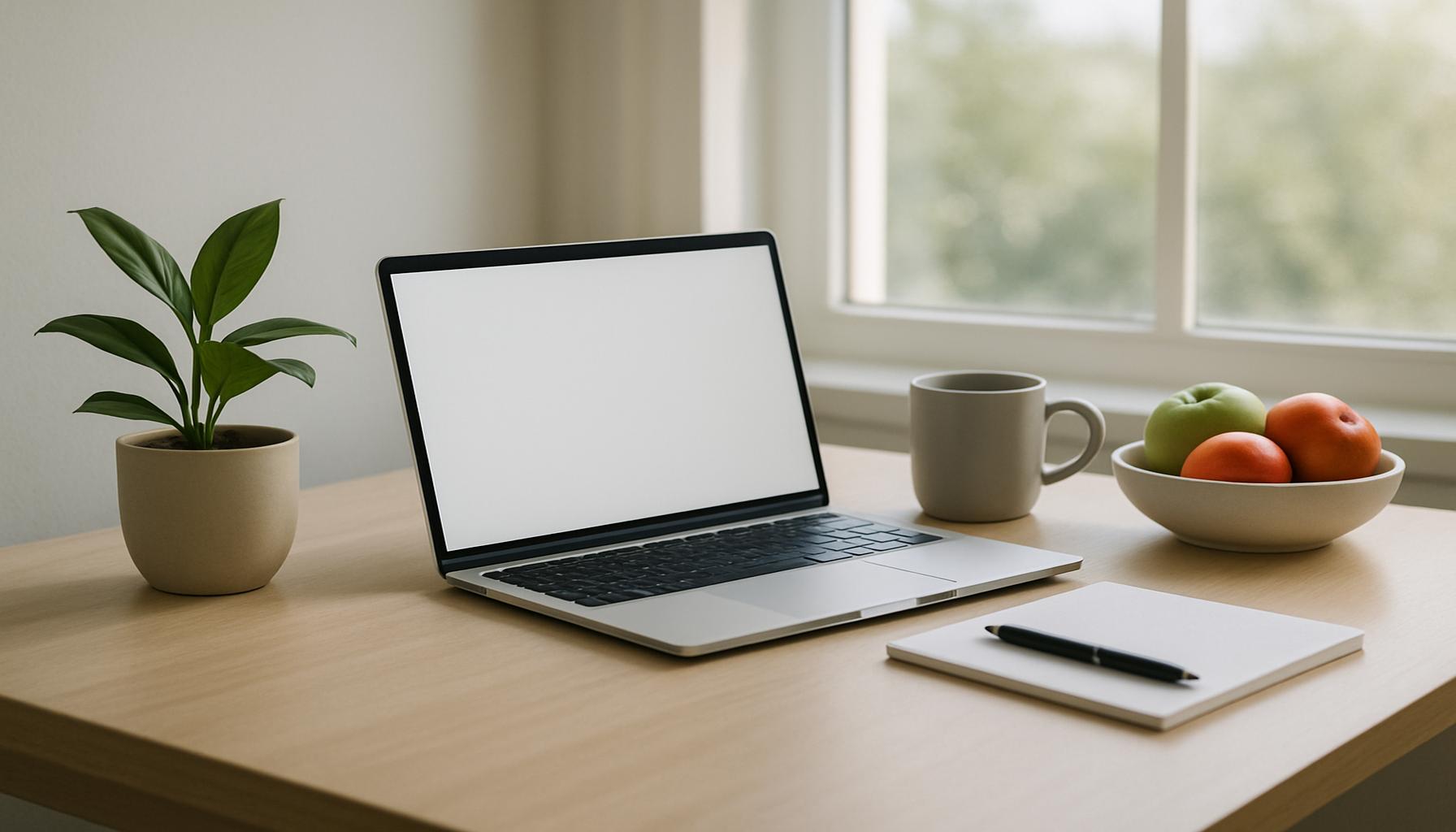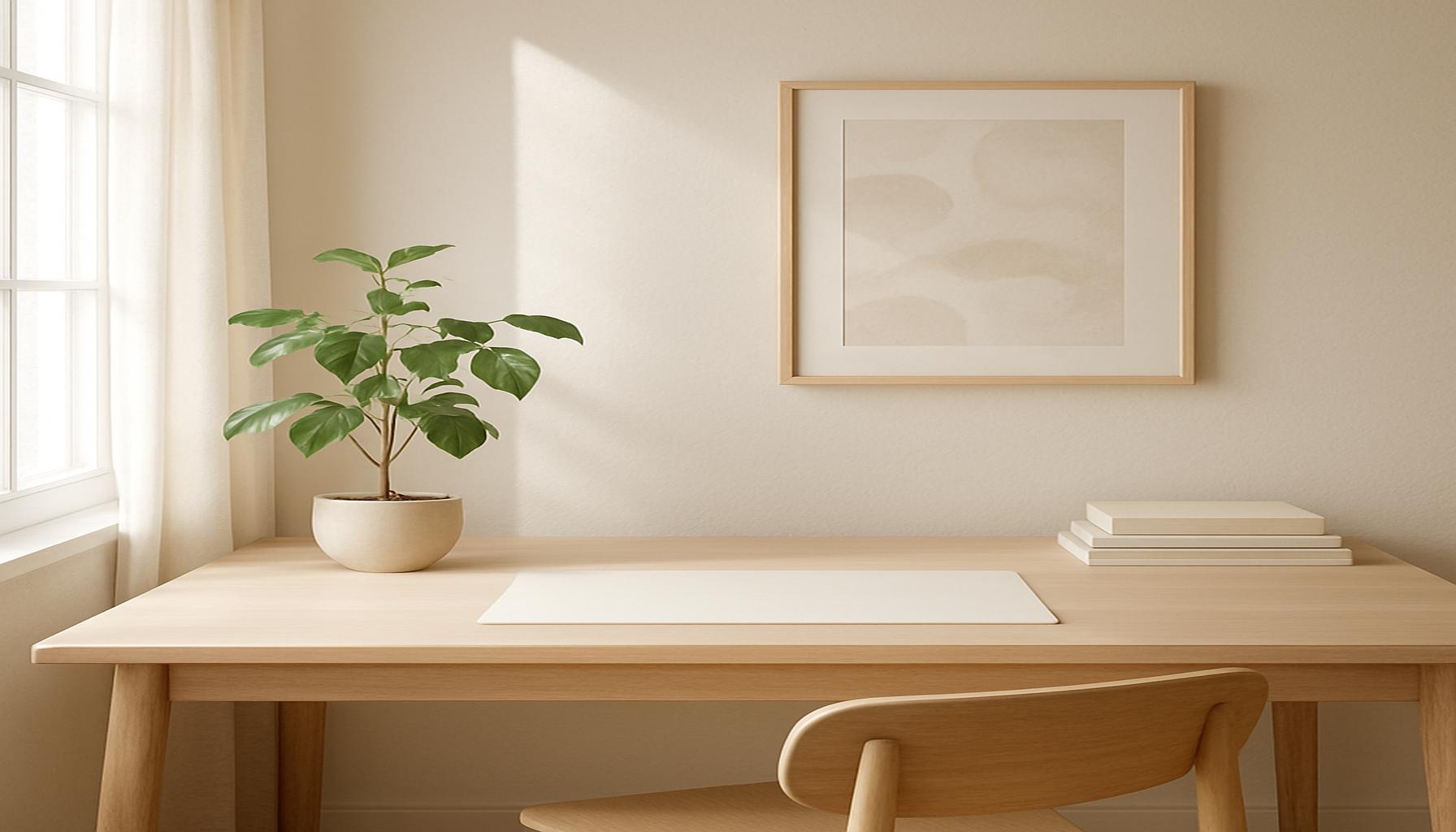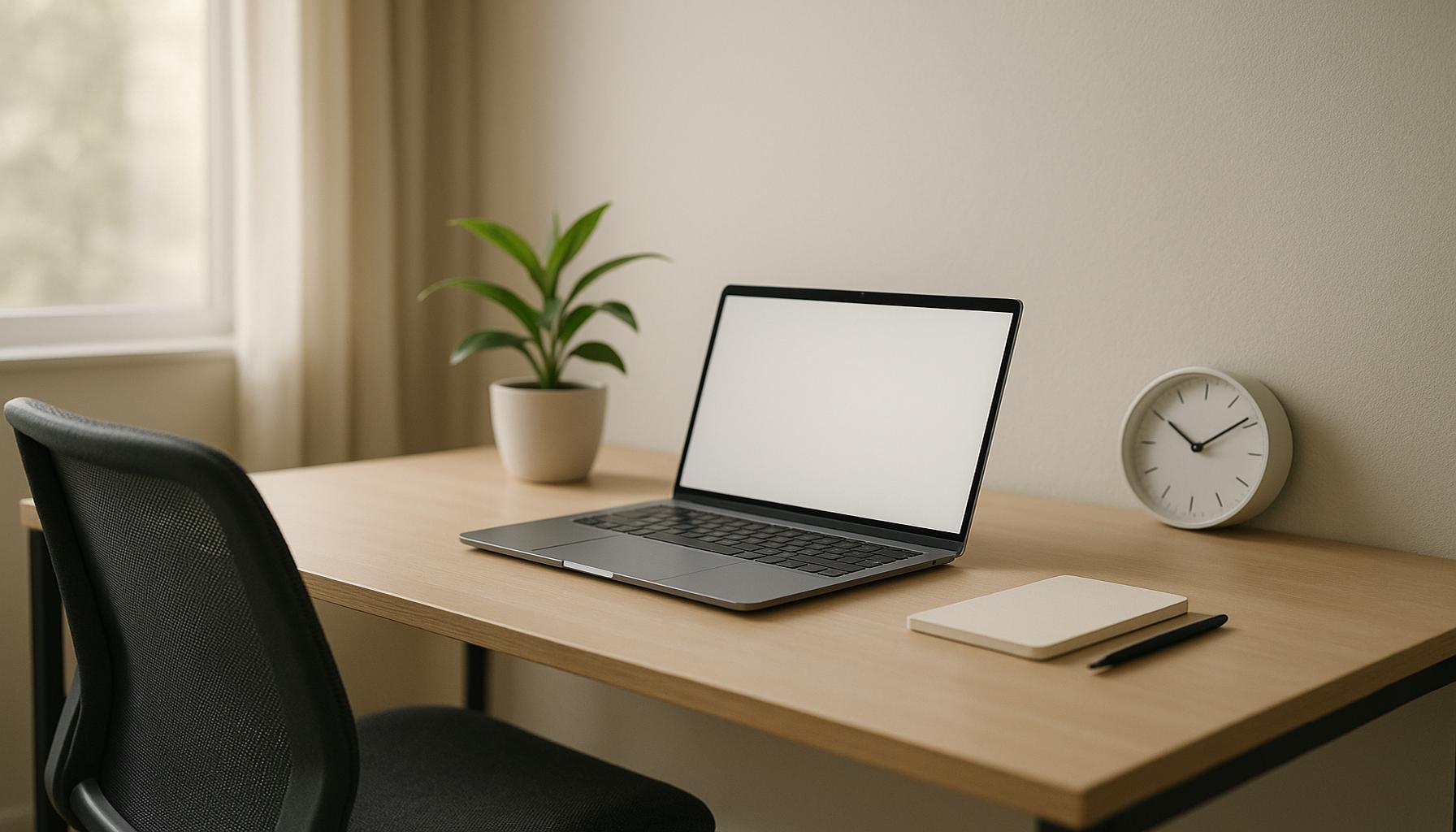How to Create a Minimalist Work Environment that Enhances Efficiency and Creativity
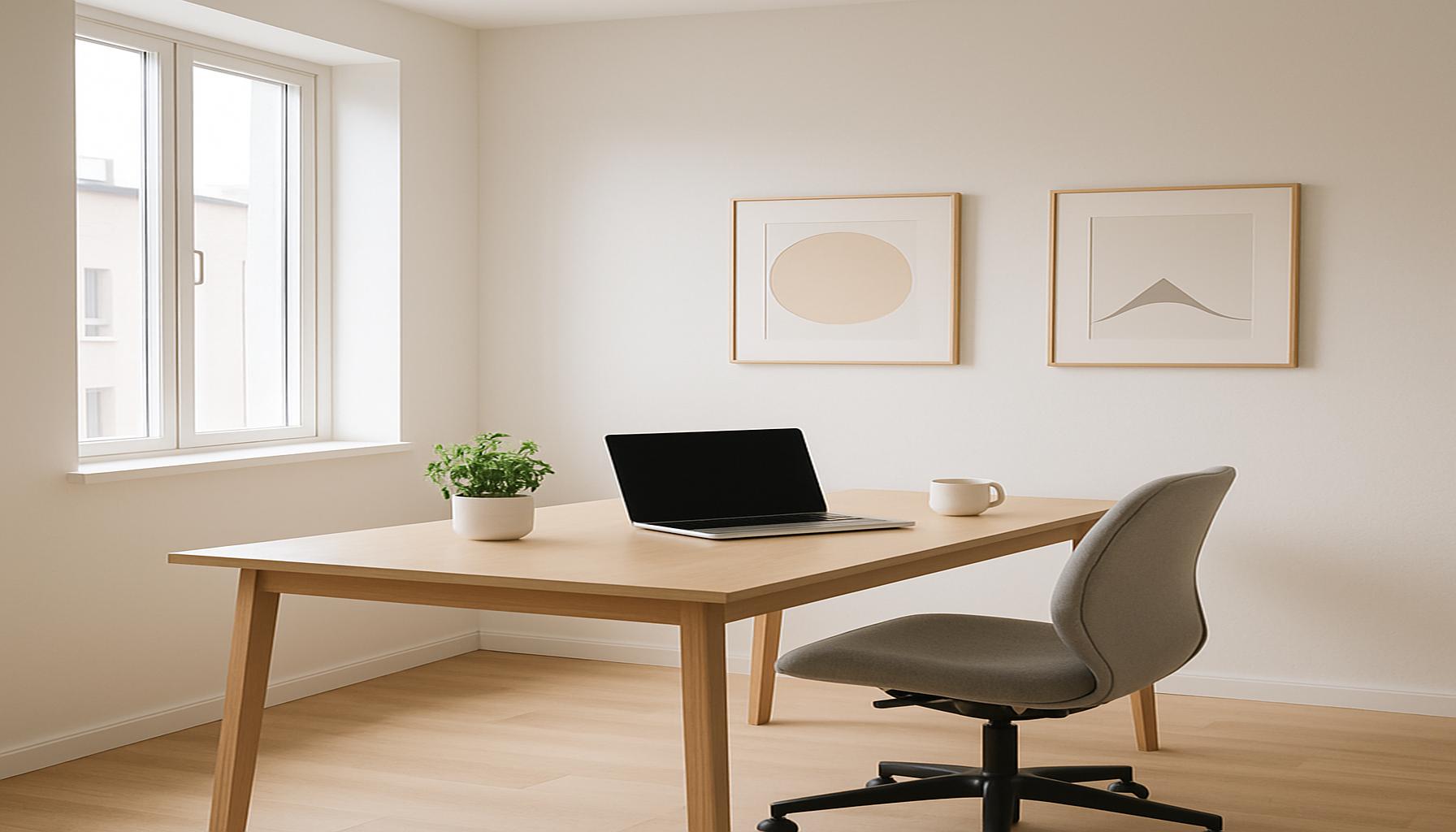
Understanding the Impact of Clutter on Productivity
In an era where multitasking and constant connectivity are paramount, the physical and mental impact of our environments becomes increasingly significant. Studies have shown that our surroundings can significantly influence our mood, productivity, and overall mindset. A minimalist work environment serves as a remedy to the chaos of everyday life, allowing us to reclaim our focus and enhance our creative capacities. By intentionally crafting a space that prioritizes clarity and simplicity, we can experience profound benefits in both professional and personal domains.
The Psychological Benefits of Minimalism
Adopting minimalism is not merely about clearing physical space; it holds powerful psychological benefits as well. For instance, clutter can create feelings of anxiety and overwhelm, whereas cultivating a streamlined environment can offer tranquility and peace of mind. A study published in the “Personality and Social Psychology Bulletin” found that individuals in cluttered environments experienced higher stress levels and lower productivity compared to those in organized spaces. This relationship highlights the importance of a reduced stress environment as foundational for maintaining mental health.
Amplifying Focus and Creativity
With distractions minimized, a minimalist workspace inherently promotes increased focus. Think about a writer surrounded by stacks of paper and unorganized notes versus one who has a clean desk with only a laptop and a notepad. The latter scenario allows them to concentrate on their ideas without extraneous distractions pulling their attention away. Moreover, a clear environment stimulates enhanced creativity. When the mind is not bogged down by visual noise, innovative thoughts can flourish. For example, tech giants like Apple and Google are known for their minimalist office designs, which facilitate spontaneous collaboration and groundbreaking ideas.
Practical Steps Towards Minimalism
Transitioning to a minimalist workspace involves a series of intentional choices. Start by evaluating your current setup and identify which items serve a genuine purpose. Incorporating functional furniture is essential; consider desks with built-in storage or sleek seating options that are stylish yet practical. Moreover, opting for a neutral color palette can create a calming backdrop, reducing visual clutter and fostering a serene atmosphere conducive to productivity.
Lastly, personalized decor can still play a role in a minimalist setting. Choose a few items that resonate with you, such as a framed photograph or an inspiring quotation, but keep it limited to avoid overwhelming your space. The key lies in selecting meaningful pieces that motivate rather than distract.
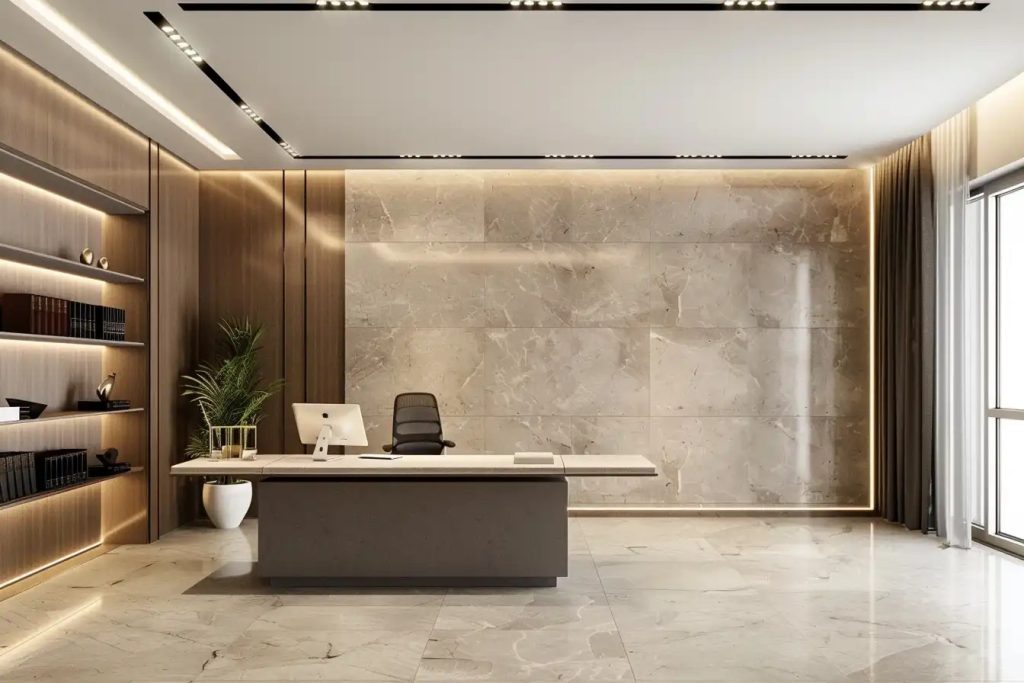
The journey toward a minimalist workspace is ongoing, requiring consistency and commitment. However, as productivity soars and creativity flows, the short-term effort yields long-lasting rewards. Embracing minimalism allows for greater clarity in thought, enhancing both the quality and efficiency of your work. In a world defined by clutter, it is an empowering step towards unlocking your true potential.
DIVE DEEPER: Click here to simplify your digital life
Key Elements of a Minimalist Work Environment
Creating a minimalist work environment is an art that involves a careful balance between aesthetics and functionality. It’s about designing a space that both inspires and allows for the maximum output of work. Several key elements contribute to achieving this balance, enabling you to tailor your workspace to enhance both efficiency and creativity.
Decluttering: The First Step Towards Minimalism
The journey towards a minimalist workspace begins with the process of decluttering. This doesn’t just mean removing physical items; it’s about making conscious decisions regarding what remains in your space. Here are some actionable steps you can take to declutter your workspace effectively:
- Assess Your Essentials: Identify the items that are essential for your daily tasks. This could range from your computer to a notepad or specific pens. Anything that doesn’t serve a direct purpose should be removed.
- Digital Decluttering: Minimalism isn’t just about physical items. Consider your digital environment by organizing files, removing unnecessary applications, and optimizing your desktop. A clean desktop can significantly reduce mental clutter.
- Implement the One-In-One-Out Rule: To maintain a balance, adopt a policy where for every new item introduced into your workspace, an old item must be removed. This strategy helps prevent accumulation over time.
Organizational Tools: Function Meets Form
Once decluttering is complete, the next step is to introduce organizational tools that align with minimalist principles. Functional furniture, such as desks equipped with hidden storage or cable management solutions, can minimize visual distractions while maximizing utility. Consider incorporating:
- Modular Shelving: These shelves can adapt as your needs change, keeping your space flexible while maintaining an organized appearance.
- Desk Organizers: Simple trays or containers can keep essential tools within reach without creating a cluttered look.
- Whiteboards: A clear whiteboard allows for quick note-taking or brainstorming without the need for paper clutter.
The combination of these tools not only enhances the functionality of your workspace but also adds to its minimalist aesthetic. By being intentional about what you include in your space, you create a harmonious environment conducive to productivity.
Lighting and Ambiance: Setting the Mood
The right lighting plays a crucial role in a minimalist work environment. Natural light is ideal, as it fosters a sense of well-being and can enhance your mood. Consider using sheer window treatments to allow sunlight while reducing glare. Additionally, ambient lighting, such as soft desk lamps, can create a soothing atmosphere that encourages focus without straining your eyes. Remember, the mood of your workspace can directly affect your mental state and productivity levels.
Implementing these elements takes time and reflection. The clarity and focus gained from a minimalist workspace not only improve immediate productivity levels but also foster a profound sense of creativity. As you embark on this journey, remember that a minimalist environment is continuously evolving; it requires ongoing assessment and adjustment to meet your unique needs and goals.
Key Elements of a Minimalist Work Environment
To truly harvest the benefits of a minimalist work environment, certain elements must be incorporated to enhance both efficiency and creativity. Here are several crucial components to consider:
- Decluttering: Start by removing unnecessary items from your workspace. This not only creates a more visually appealing atmosphere but also removes distractions, allowing for clearer focus and improved productivity.
- Functional Furniture: Invest in furniture that serves multiple purposes. Pieces that are both aesthetic and functional can streamline your workspace, enabling easy organization while maintaining a sense of style.
- Natural Light: Maximize the use of natural light in your workspace. A well-lit area can enhance mood and productivity, encouraging creativity to flow freely.
- Personal Touches: While minimalism advocates for less clutter, adding personal touches through a few carefully chosen items can inspire and motivate. Keep it simple—a single plant or a piece of art can serve as a focal point.
These elements come together to create a work environment that is not just minimal but also tailored to foster innovation and effectiveness in daily tasks. For those looking to dive deeper, we encourage exploring unique organization techniques and the psychology behind minimalist spaces.
| Category | Key Features |
|---|---|
| Decluttering | Removes distractions, improving focus. |
| Functional Furniture | Streamlines space while enhancing style. |
| Natural Light | Boosts mood and productivity. |
| Personal Touches | Inspires creativity while remaining minimal. |
Each of these elements not only contributes to the aesthetics of your workspace but also plays a vital role in enhancing your overall work experience. Explore these concepts further to understand how they can dramatically transform your professional productivity.
DISCOVER MORE: Click here to learn how minimalism can boost your work efficiency
Nurturing a Creative Mindset: Techniques to Amplify Focus
A minimalist work environment is not just about the physical space; it also encompasses the mental and emotional aspects that foster creativity and efficiency. By incorporating strategies that encourage a creative mindset, individuals can fully realize the potential of their well-curated workspace. Here are several techniques that can help support this objective:
Mindfulness Practices: Grounding Your Work
Integrating mindfulness practices into your work routine can significantly enhance both focus and creativity. Simple techniques can make a world of difference. Consider these practices:
- Deep Breathing Exercises: Taking a few minutes to focus on your breath can center your mind and reduce anxiety, especially when faced with daunting tasks. This quick reset can clear mental clutter, paving the way for innovative thoughts.
- Short Meditation Sessions: Dedicating 5-10 minutes to meditation can help cultivate awareness and presence. There are many apps available, such as Headspace and Calm, that provide guided sessions tailored for productivity.
Time Management Techniques: Structuring Your Day
Implementing effective time management techniques is vital for maintaining a minimalist work environment that promotes focus. The Pomodoro Technique, for instance, involves working for 25 minutes followed by a 5-minute break. This method not only helps sustain concentration but also fits well within the context of a clean and arranged workspace.
Moreover, utilizing digital tools like Trello or Asana allows you to manage tasks without overwhelming your workspace with sticky notes or paper lists. By leveraging these structured approaches, you can spend more time being productive and less time organizing, which is key to maintaining a minimalist aesthetic.
Personalizing the Space: Inspirational Elements
In a minimalist workspace, it’s essential to include a few personalized elements that resonate with you as an individual. This could include:
- Inspirational Quotes: Consider incorporating a single, framed quote that embodies your professional philosophy or personal mantra. This subtle reminder can serve as motivation without cluttering your space.
- Art and Decor: A single piece of artwork or a plant can enhance creativity while keeping the work area feeling fresh and lively. Choose items that reflect your personal style but remain harmonious with the minimalist theme.
Remember, the goal is to evoke inspiration without overwhelming the senses. Striking the right balance here is crucial for a minimalist work environment that supports creativity.
Regular Reflection: Assessing Workspace Effectiveness
Creating a minimalist work environment is an ongoing process, and regular reflection is essential to ensure it continues to meet your needs. Setting aside time weekly or monthly to evaluate your workspace can lead to valuable insights. Ask yourself:
- Is there any new clutter that needs addressing?
- Are the organizational tools still serving their purpose effectively?
- Do I feel inspired and productive in my current setup?
By remaining attentive to these factors, you can maintain a workspace that truly enhances efficiency and creativity. Minimalism should be a dynamic journey rather than a static endpoint, evolving alongside your professional and personal growth.
In this way, a minimalist workspace not only contributes to immediate productivity but also enhances long-term satisfaction and creativity by promoting an environment where ideas can flourish and focus can thrive.
DISCOVER MORE: Click here to learn how to set intentional goals
Conclusion: Embracing Minimalism for a Productive Work Life
In a world riddled with distractions and excess, creating a minimalist work environment can yield remarkable benefits for both efficiency and creativity. By focusing on essentialism—distilling your workspace down to only what is necessary and inspiring—you build an atmosphere that enhances your ability to concentrate and think innovatively.
Underlying this approach are fundamental principles such as mindfulness, effective time management, and personalization. Techniques like brief meditation sessions or structured working intervals through the Pomodoro Technique can anchor your productivity, while a carefully selected touch of art or an inspiring quote can infuse your space with a sense of identity and motivation.
Regular introspection also plays a pivotal role in maintaining this minimalist aesthetic. By routinely evaluating your workspace, you can make informed adjustments that align with your evolving goals, thus ensuring that your environment continues to be conducive to productivity over time.
Ultimately, adopting a minimalist work approach is not merely about reduction; it is about setting the stage for creativity and focus to flourish. By removing the nonessential, you make room for breakthrough ideas to emerge, paving the way for professional growth. Now is the time to embrace minimalism—not just as a trend, but as a sustainable practice that redefines your work life in the ever-demanding landscape of today’s work culture.
